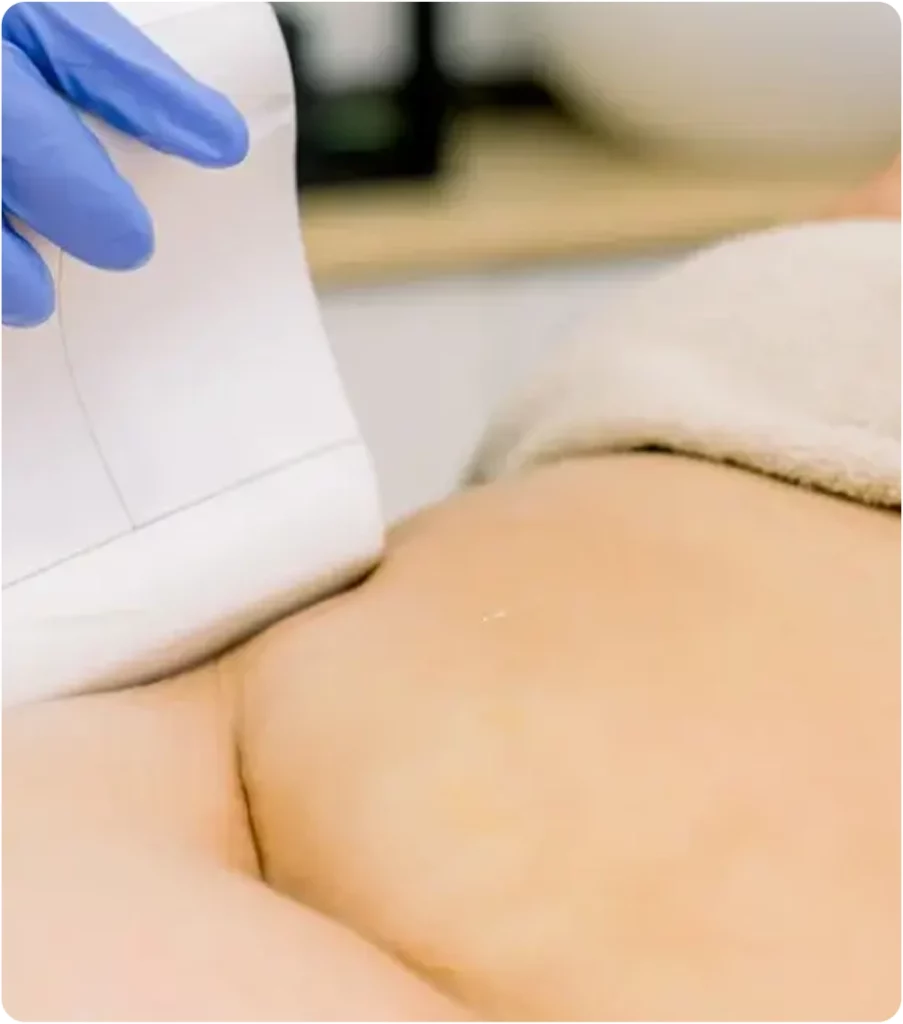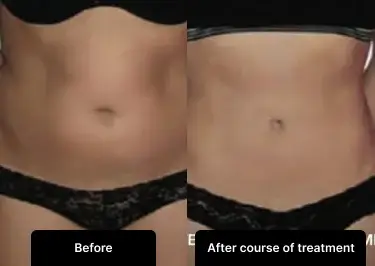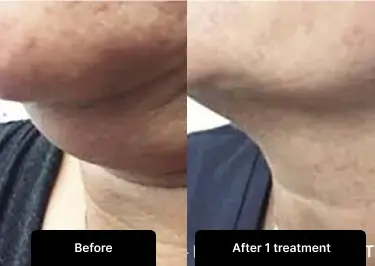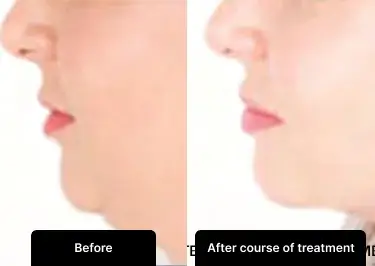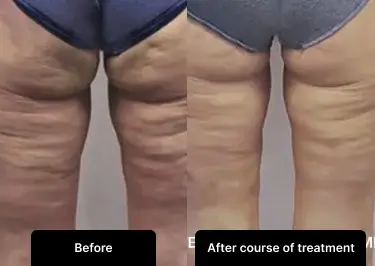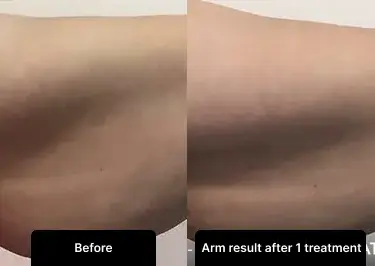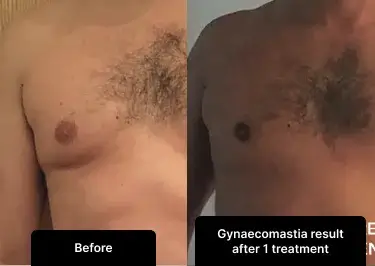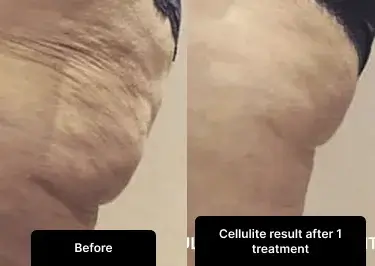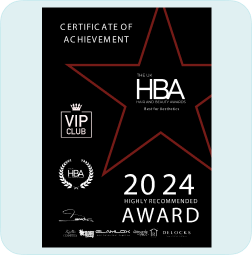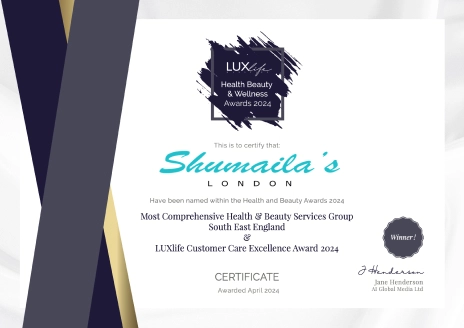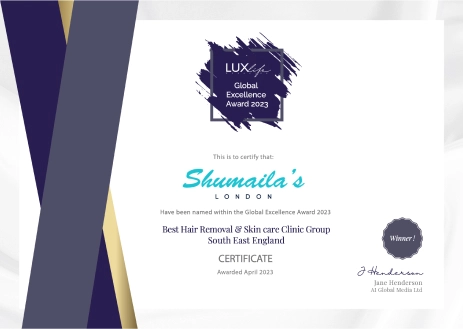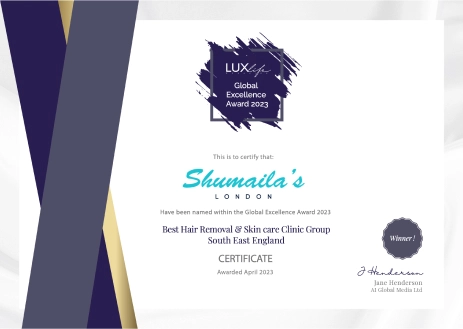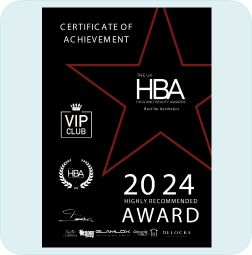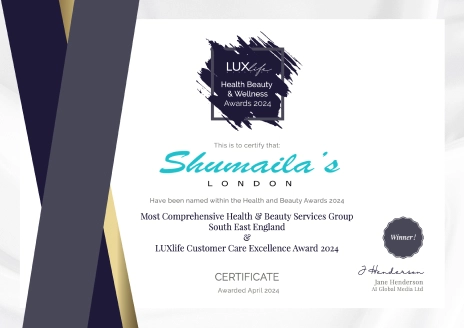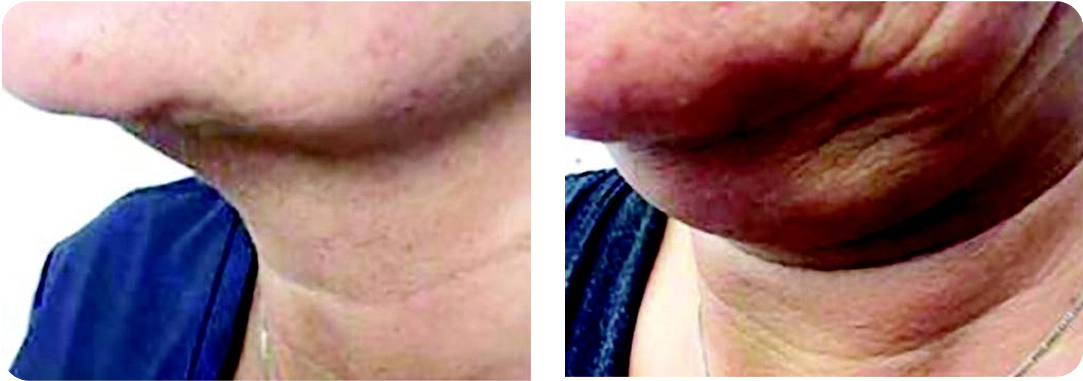Look. Feel. Live. Better
Happy Customer Reviews
Client Results
Showing our favourite reviews from Google
Showing our favourite reviews from Google
Cryolipolysis also known as fat freezing, is a non-surgical procedure to remove excess stubborn pockets of fat. It targets adipose (fat tissue), freezes it and with the help of your body’s natural lymphatic system your body eliminates it without causing any damage or scarring.
LipoContrast with us
How much does fat freezing hurt?
We at Shumaila’s use the latest pain-free fat freezing technology.
Fat freezing is a pain free procedure, however there is a slight discomfort during the procedure, and mild redness and erythema immediately after the treatment which goes away in a couple of hours depending on your skin’s sensitivity level.
How often do I need a session of Fat Freezing?
Fat freezing sessions are performed every 4-6 weeks.
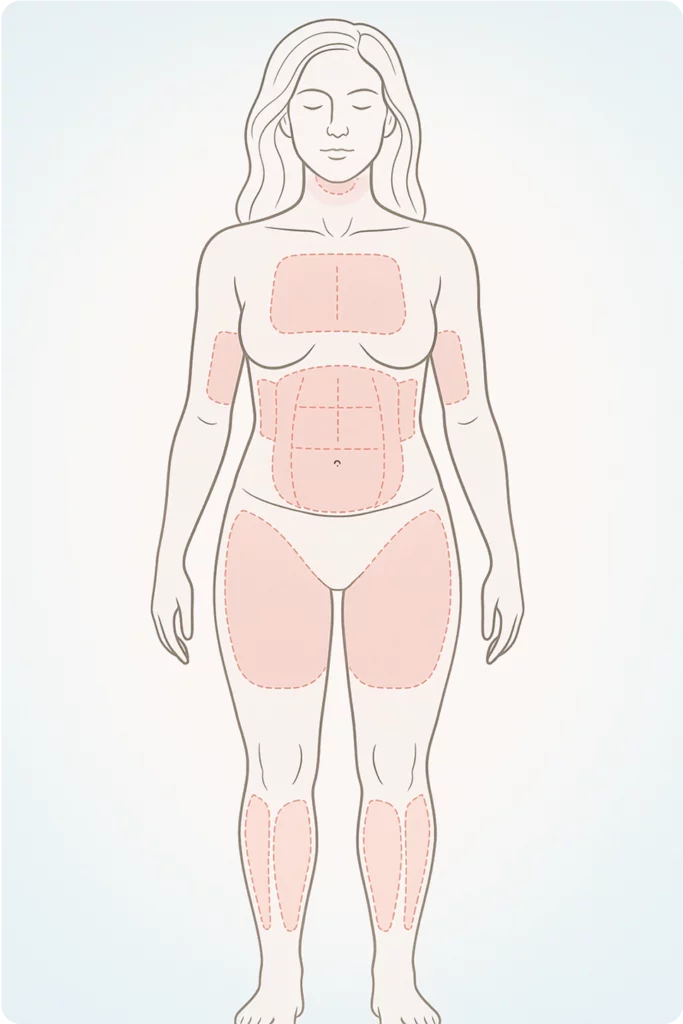
When will you start seeing results?
Results from fat freezing treatment are not immediate, as the body takes time to naturally process and eliminate the frozen fat cells. Some individuals may start noticing changes as early as three weeks after the treatment, with more visible results becoming apparent over the following months. By around two to three months post-treatment, you can expect to see significant fat reduction and improvements in the treated areas.
It’s important to remember that individual response may vary, and some people may experience more gradual changes. Maintaining a healthy lifestyle with regular exercise and a balanced diet can further enhance and sustain the results, leading to a slimmer and more sculpted appearance.
Is Fat Freezing right for you?
Fat freezing can be an excellent option for many individuals, but it may not be suitable for everyone. The best way to determine if fat freezing is right for you is to schedule a consultation with our qualified practitioner. During the consultation, we will assess your individual needs, medical history, and body contouring goals to determine if you are a good candidate for the treatment.
It’s essential to have an open and honest discussion with your practitioner about your goals and concerns to ensure that fat freezing is the right fit for you. We can provide personalized advice and recommendations based on your specific circumstances, helping you make an informed decision about your body contouring journey.
Fat freezing may be suitable for you if:
Showing our favourite reviews from Trustpilot
Showing our favourite reviews from Trustpilot
Frequent Asked Questions
Fat freezing, also known as cryolipolysis, is a non-invasive body contouring treatment that targets and freezes fat cells. The controlled cooling process crystallizes the fat cells, causing them to die off gradually. Over time, the body naturally eliminates the frozen fat cells, resulting in fat reduction in the treated area
Yes, fat freezing is a safe and FDA-approved procedure. The technology is designed to target fat cells without damaging the surrounding tissues.
The treatment is generally well-tolerated, and most people experience minimal discomfort during the procedure. Some may feel a cold sensation and temporary numbness in the treated area, which subsides shortly after the session.
The duration of a fat freezing session depends on the number of areas being treated. On average, each area may take 60 minutes.
While some individuals may notice changes within a few weeks, the most noticeable fat reduction usually occurs within two to three months post-treatment. The body continues to flush out the destroyed fat cells gradually.
The number of sessions required varies depending on individual body composition and goals. Often, a series of treatments may be recommended to achieve the desired results.
Yes, the fat cells treated and eliminated during fat freezing are permanently removed from the body. However, maintaining a healthy lifestyle is essential to prevent the remaining fat cells from expanding.
Fat freezing can target various areas, including the abdomen, flanks, thighs, buttocks, upper arms, and more.
Common side effects may include temporary redness, swelling, bruising, or numbness in the treated area. These effects are typically mild and subside on their own.
Fat freezing is best suited for individuals with localized areas of stubborn fat that are close to their ideal weight. It is not a weight-loss solution but rather a body contouring treatment. A consultation with our qualified practitioner can determine if fat freezing is suitable for your specific needs and goals.
During fat freezing sessions, there is no specific requirement to go on a strict diet. However, maintaining a healthy and balanced diet can support your body’s natural fat elimination process and contribute to better results.
While fat freezing permanently eliminates treated fat cells, it does not prevent the growth of new fat cells in untreated areas. Therefore, adopting healthy eating habits can help prevent weight gain in other parts of your body and maintain the sculpted results achieved through fat freezing.
A well-rounded diet that includes plenty of fruits, vegetables, lean proteins, whole grains, and healthy fats can support overall health and wellness. Staying hydrated by drinking an adequate amount of water is also essential for effective lymphatic drainage and the removal of released fat.
It’s essential to consult with a healthcare professional or nutritionist to create a diet plan that aligns with your individual needs and complements your fat freezing journey. Combining a healthy lifestyle with fat freezing can optimize the results and help you achieve your body contouring goals.
Fat freezing, also known as cryolipolysis, is not intended for weight loss. It is a body contouring procedure designed to target and eliminate localized pockets of stubborn fat in specific areas of the body. While fat freezing can lead to fat reduction in the treated areas, it does not result in
significant weight loss or address overall body weight.
The primary purpose of fat freezing is to sculpt and contour the body by reducing fat in specific areas that are resistant to diet and exercise. It is best suited for individuals who are close to their ideal weight but have stubborn areas of fat that are challenging to eliminate through traditional means.
To achieve weight loss or overall body fat reduction, adopting a healthy lifestyle that includes a balanced diet and regular exercise is recommended. Fat freezing can be a beneficial addition to a comprehensive weight management plan for individuals looking to enhance specific areas of their body and achieve a more sculpted appearance.
After fat freezing treatment, following these aftercare guidelines can help optimize results and ensure a smooth recovery:
- Massage the Treated Area: Gently massaging the treated area for a few minutes each day can aid in the natural breakdown and elimination of frozen fat cells.
- Stay Hydrated: Drink plenty of water to support the body’s natural detoxification process and promote lymphatic drainage.
- Avoid Excessive Heat: Refrain from hot baths, saunas, or Jacuzzis for at least 48 hours post-treatment to allow the body to recover.
- Moderate Exercise: Engage in light to moderate exercise, such as walking, to encourage lymphatic circulation and the elimination of released fat.
- Wear Comfortable Clothing: Opt for loose and comfortable clothing in the treated area to minimize irritation and support the healing process.
- Avoid Alcohol and Caffeine: Limit alcohol and caffeine consumption for the first 48 hours to reduce stress on the liver.
- Healthy Diet: Maintain a balanced and nutritious diet to support the body’s recovery and overall well-being.
- Avoid Anti-Inflammatory Medications: Refrain from taking anti-inflammatory medications like ibuprofen unless advised by a healthcare professional.
- Monitor the Treated Area: Keep an eye on the treated area for any unusual changes or concerns and notify your practitioner if needed.
- Follow Post-Treatment Recommendations: Adhere to any specific aftercare instructions provided by your practitioner for the best results.
It’s essential to remember that individual recovery may vary, and some people may experience mild temporary side effects such as redness, swelling, bruising, or numbness in the treated area. These effects are typically mild and subside over time. If you have any questions or concerns during your recovery, don’t hesitate to reach out to your practitioner for guidance and support.
